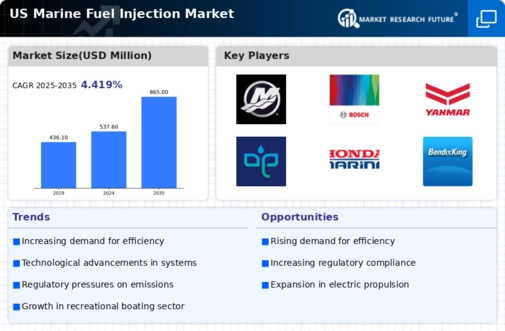US Marine Fuel Injection Market Summary
The US Marine Fuel Injection market is projected to grow from 537.6 million USD in 2024 to 865 million USD by 2035, reflecting a robust CAGR of 4.42%.
Key Market Trends & Highlights
US Marine Fuel Injection Key Trends and Highlights
- The market valuation is expected to increase from 537.6 million USD in 2024 to 865 million USD by 2035.
- A compound annual growth rate of 4.42% is anticipated for the period from 2025 to 2035.
- The growth trajectory indicates a rising demand for advanced fuel injection systems in marine applications.
- Growing adoption of fuel-efficient technologies due to environmental regulations is a major market driver.
Market Size & Forecast
| 2024 Market Size | 537.6 (USD Million) |
| 2035 Market Size | 865 (USD Million) |
| CAGR (2025-2035) | 4.42% |
Major Players
Mercury Marine, Fairbanks Morse, Bosch, Yanmar, Tefen, Honda Marine, Bendix, Marelli, Delphi, Volvo Penta, Kohler, Wärtsilä, Caterpillar, Cummins, MTU













